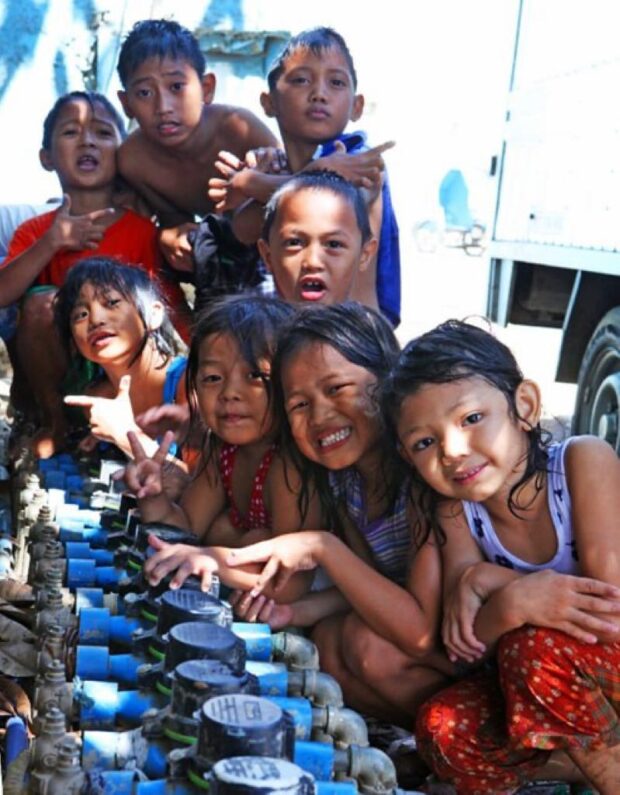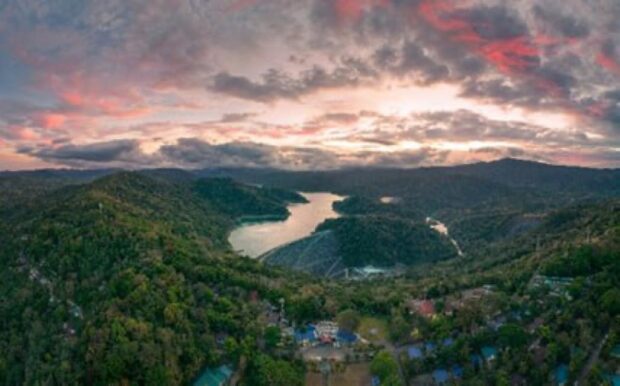‘Water-proofing’ our future must be a priority

Manila Water’s plan to achieve water security includes searching and developing alternative water sources to be able to meet the ever-increasing demand in their service area. To ensure that the supply of potable reaches its more than 7 million customers in the East Zone, Manila Water has intensified its system loss reduction program which has resulted in a low level of non-revenue water of 13-14% which is among the best in the Asia-Pacific region.
MANILA, Philippines — While Metro Manilans get a reprieve because of Angat Dam breaching the targeted year-end level of 212 meters, we cannot remain complacent as the impact of a scorching El Nino still looms for next year.
We cannot thus put all our eggs in one basket which tells us that the development of new water sources is a pressing need to reduce our overdependence on Angat Dam for the water supply for a megacity of 15 million people.

In early November, MWSS and the two concessionaires announced the repair and rehabilitation of Angat Dam, in particular the hydroelectric components of its intake facility which transports water to the La Mesa treatment facilities of the West Zone concessionaire and the Balara treatment plants of East Zone water concessionaire, Manila Water. Noteworthy is that there has been no rehabilitation since the dam began its operation in 1967. The shutdown necessitated the opening of the low-level outlet of the dam to make sure the dam continues to supply raw water to both concessionaires steadily.
Past experiences remind us that the low-level outlet was usually opened when the water level at the dam was critically low which may potentially result in water quality issues.
With this recent event, the call to develop new water sources cannot be overemphasized at this point. Doing so will ensure sufficient and safe supply of water in the coming years.
READ: Manila Water, Maynilad users face higher rates in 2024
MWSS has long recognized this need and developed a water source roadmap that will provide sustainable water supply for the increasing population and urbanization in Metro Manila and the adjacent provinces of Rizal, Bulacan, and Cavite.
Article continues after this advertisementThe MWSS Water Security Legacy Roadmap aims to mobilize collaborative efforts among Manila Water and the other concessionaires as well as different stakeholder groups to address critical water woes in Metro Manila. The roadmap seeks to develop robust plans and long-term solutions to benefit the growing customer base. It seeks to address seven key areas: water infrastructure development and resource management protection, sewerage and sanitation, water distribution efficiency, tariff rationalization and business plan review, partnership development, communications and knowledge management, and organizational excellence.
Article continues after this advertisementWith this roadmap, MWSS has begun embarking on the first of its identified major water source projects, the Kaliwa Dam, which is now 25% complete. It is expected to augment the water supply of the metropolis and serve as a much-needed redundancy to the aging Angat Dam adding 600 million liters per day of water supply by 2026.
READ: Manila Water, Manila Water Foundation complete handover of 72 refrigerated drinking fountains to QC public schools
For its part, Manila Water has made public its 2023-2027 service improvement plan at an investment cost of P181 billion to continuously meet its service obligations as well as the demands of its growing customer base.
Among other initiatives, Manila Water’s plan to achieve water security includes searching and developing alternative water sources to be able to meet the ever-increasing demand in their service area. The company has an ongoing undertaking with the MWSS and the NRWB to develop new water sources through Manila Water’s proposed four-water system master plan that includes Angat-La Mesa Water System (Sumag River-Umiray Angat), Laguna Lake Water System (East Bay Water Source), Antipolo Water System (Wawa-Calawis), and East Sources Water System (Kaliwa and Long-term East Sources).
Recent projects include the Wawa Calawis Water Supply System Project with the completion of the 80-million liters per day (MLD) capacity Calawis Water Treatment Plant, which draws raw water from the Tayabasan River located in Barangay Calawis, Antipolo City. Phase 2 of this project will further yield an additional 436 MLD. East Bay Water Supply System, which will harness water from the eastern flank of Laguna Lake is also nearing completion for its Phase 1, according to Manila Water, and this will supply up to 50 MLD to more Rizal towns. Once completed, its Phase 2 will be able to augment another 200 MLD.
READ: Manila Water is FIDIC’s Client of the Year awardee
While this service improvement plan is underway, Manila Water is already augmenting its water supply through its 100-MLD Cardona Water Treatment Plant, which draws water from the central section of Laguna Lake. This plant can deliver water to several towns in Rizal through 45 kilometers of transmission lines and 61 kilometers of distribution lines.
To ensure that the supply of potable reaches its more than 7 million customers in the East Zone, Manila Water has intensified its system loss reduction program which has resulted in a low level of non-revenue water of 13-14% which is among the best in the Asia-Pacific region.